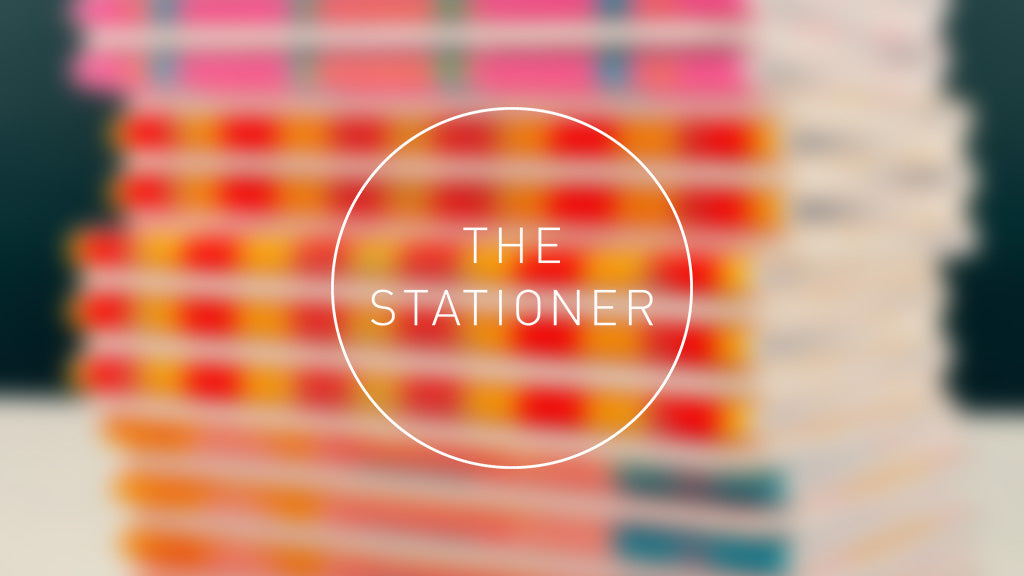The sixteenth edition of Dapper Notes is for subscribers only. Here's Why.
Everything is an experiment
Every design I create is a brand new experiment. I try to find an interesting combination of cover materials - usually fabric and book cloth - and the best way to turn them into a nice looking, durable cover. The thread and decorative endsheet are then picked to match the design, but creating a great cover always comes first.
My usual process will include perusing fabric shops where I purchase a variety of samplings. When I shop, I'm not only looking for nice designs, but also consider the thickness and threading. Super thin fabrics will make for flappy unusable covers, and thicker ones end up too stiff and won't be fun to use in notebook form.
Once I pick a few fabrics, I try to find the best way to bind them onto another material to transform each one into a working cover. For most fabrics, archival glue and a book cloth backing will suffice. Thinner fabrics might require fusing with a Pellon material. I also make sample notebooks to carry around with me in my back pocket for a few days to see how they hold up.
Batch covers are hard to make
When a notebook passes my preliminary testing, it gets added to my list of potential upcoming editions. As you may already know, I release a new Bookhead Club Dapper Notes every other month, which gives me time to experiment, and also to take a break between editions to do other things. At about three weeks before every release I go through my test notebooks and pick one that matches a befitting theme (like time of year, people in my life, or whatever feels like the right one to come out next).
In all of my videos you see a single notebook being made from start to finish. In reality, however, I perform many of the steps in batches. When it comes to covers for example, I bind big sheets of the selected materials and only then cut them to notebook size. This process ends up saving me a lot of time, but is also a lot harder to do than first cutting to size and only then binding.
Why is it harder to bind larger sheets? Several reasons: I need to deal with precise measurements of multiple notebooks. If I'm using glue I need to work FAST. Placing two large things together, one of which is slathered with wet glue, is really hard to do precisely, especially while working alone. Plus: after the binding is all done, I need to wait for the cover to dry just enough, but not completely because I then iron each cover individually, and then press the entire [nearly-dry] stack so that you don't end up with notebook corners that curl up.
Sounds like a lot, and it is, but the challenge is half the fun.
What happened with Coral
The pattern I picked for edition #16 looks a lot like a dive flag, and the fabric it's made of is a relatively thin flag-like material. My preliminary testing yielded a really nice notebook, but when I made the production cover batch I made a big booboo.
As usual, I trimmed the large sheets (into strips this time because I had to transform the parallel line design into an angled one), added glue, connected the sky-blue book cloth, cut the strips to notebook size, and ironed each cover. So far so good. What I didn't pay attention to is the fact that some of the covers didn't get to the almost-dry-but-not-completely point, and I put them into my press in a wetter-than-they-should-have-been condition for an overnight flattening.
When I opened the press the next day to run a QA inspection, I was disheartened to discover my big mistake. Many of the covers were glued to one another on both sides, so instead of notebooks covers I ended up with an unusable paperweight.
Thankfully there were a handful more-than-enough covers to make notebooks for all Bookhead Club subscribers, so I made the decision to go ahead and create the Coral edition with the covers that were dry enough before pressing.
What I learned
Every new notebook has taught me to pay attention to yet another detail of the bookmaking process. While a Dapper Notes might appear on the surface to be just...a notebook, there are dozens of little considerations that go into every step.
This edition taught me one big lesson, perhaps bigger than what new things I usually learn to pay attention to, but now I know to be more careful about getting to the right drying point before pressing my covers.
What this means for you
If you're a subscriber, you're all good! Your notebook is already on its way, and likely already delivered by the time you're reading this.
If you're not yet a subscriber, you might be able to score a trade for Coral with a subscriber, but there won't be any made for general sale on dappernotes.com
To not leave you empty handed on launch day, I created new variations of the Summer of Sketching edition. Coral introduced the very first lined Dapper Notes, and with the rest of the materials I had on hand for Summer of Sketching I made a few lined, graph, and blank notebooks. At the time of writing there are about a dozen of each type, but take note that since I'm now out of some of the Summer of Sketching materials, once these are gone from the site, that's it for this summer.
And if you read this far, thank you for caring about my notebooks and supporting the work that brings lots of joy (and occasional anguish) into my life.







